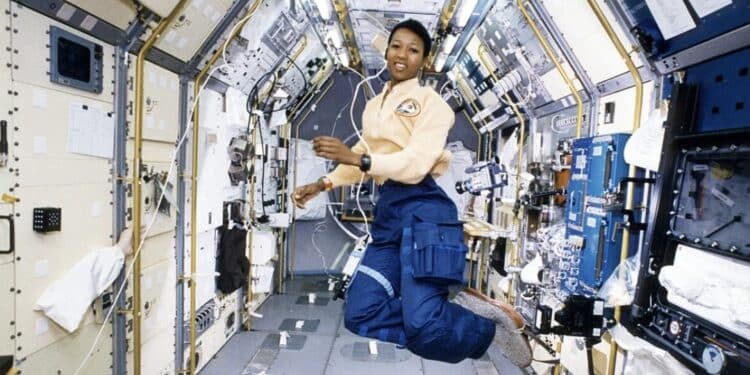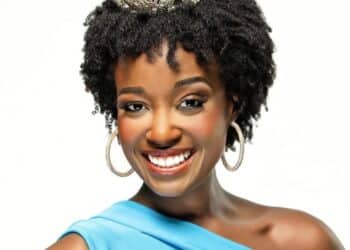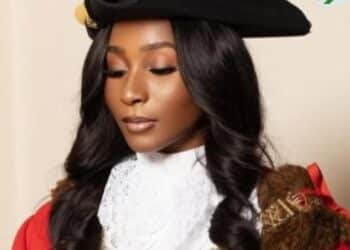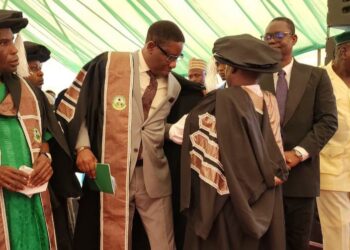A multi-talented woman from Alabama, United States, Mae Carol Jemison, became the first African-American woman to fly to space in 1992 after completing a mission with America’s National Aeronautics and Space Administration (NASA).
Mae Carol Jemison, now 66, inspired many young scholars worldwide after setting a record. As a girl, she became interested in science and the arts and started dancing at age 11.
At 16, she was accepted to Stanford University in California, United States, to earn a bachelor’s degree in Chemical Engineering. After a series of exceptional academic journeys, she graduated with two Bachelor’s degrees: one in Chemical Engineering and another in African American studies.
Shortly after earning two degrees at Stanford University, Mae Carol Jemison enrolled as a Medical Doctor at Cornell University in New York, United States.
Mae Carol Jemison later became a Medical Doctor in 1981, adding to her series of academic achievements, which included being a Chemical Engineer. She joined the National Aeronautics and Space Administration (NASA) and worked as an astronaut at the Space Centre.
Jemison was in the first group of astronauts chosen after the flight lapse following the Challenger explosion and flew on Sept. 12, 1992, making 127 orbits of the Earth.
Mae Jemison’s early career
During her early career, Jemison served as a general practitioner, conducted relief work throughout Africa with the Peace Corps, helped research vaccines with the Centre for Disease Control, and also found time to learn Russian, Japanese, and Swahili.
Then, in 1985, Sally Ride became the first American woman to fly in space, rekindling Jemison’s long-held dreams.
“I picked up the phone. I called down to Johnson Space Center. I said, ‘I would like to be an astronaut’. They didn’t laugh! I turned in the application,” Jemison told the website The Mary Sue in 2018.
Jemison joins NASA
In 1987, 2,000 people applied to join NASA’s Astronaut Group 12. 15 were accepted, including Jemison.
After completing her training, in 1989 she was assigned to STS-47, a joint mission with the Japanese space agency on which she would conduct various materials and life science experiments alongside her fellow astronauts.
After a three-year wait, Jemison finally achieved her dream on September 12, 1992, when the Space Shuttle Endeavour blasted off on mission STS-47.
Mae Jemison spent 8 days in space, orbiting Earth 127 times.
As a nod to the woman who inspired her, Jemison would open communications every shift by repeating Uhura’s signature phrase, “Hailing frequencies open”.
Keen to represent people who hadn’t been seen in space before, she brought several artefacts with her, including a statue from the women’s society of Bundu in West Africa and a pennant from the first African-American sorority, Alpha Kappa Alpha.
Mae Carol Jemison returned to Earth on September 20, completing her only flight.
In 1993, she left NASA but continued to advocate for science education, particularly among minority students.
Since then, she has founded the Jemison Group Inc., which investigates the social and cultural impacts of technological advancements, and the Dorothy Jemison Foundation for Excellence (named after her mother), which helps children develop ‘personal excellence’, as well as taking professorships at Dartmouth College and Cornell University.
Jemison’s space journey came full circle in 1993 when LeVar Burton, the actor who played Geordi La Forge on Star Trek: The Next Generation, discovered that Jemison was a show fan and invited her to appear.
She played Lieutenant Palmer in a cameo appearance in the episode Second Chances, the first real astronaut to appear on the show.
Two decades later, in 2012, Mae Carol Jemison took on the task of ensuring the future portrayed on Star Trek became a reality when her foundation was awarded the 100-Year Starship Project. This initiative aims to accelerate the progress of human spaceflight to another star within the next 100 years.
“We need to make sure we’re using the full wealth of human talent: across ethnicity, across gender, across geography, across disciplines,” Jemison said to PBS’s Nova programme in 2015.
“All the capabilities needed for a successful journey to another star system by humans are all the capabilities that we need to sustain ourselves as humans on this planet.
“And so we believe pursuing an extraordinary tomorrow creates a better world today.”










